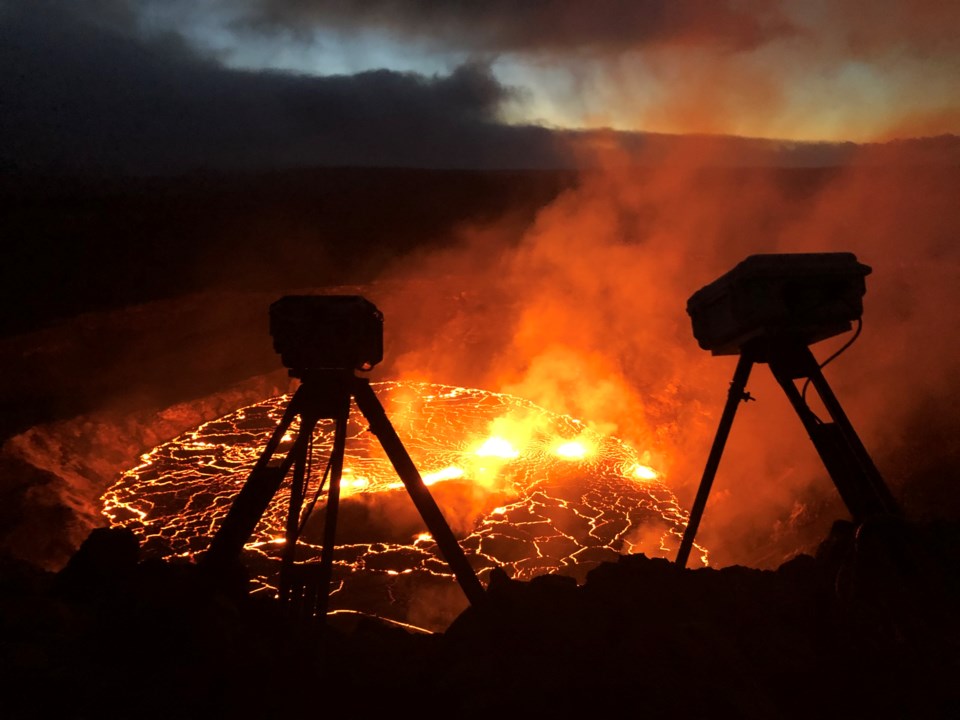Basalt can be seen all around Whistler, erupted from local volcanoes like Mount Cayley and Garibaldi. It is also used in landscaping as well as being a favoured medium for sculptors, including, locally, the world’s biggest pinecone on the Valley Trail and the giant Innunguaq welcoming visitors to Whistler. There even used to be a great little restaurant, Basalt, on the Village Stroll. That said, I’m pretty sure many of you hardly give basalt much thought. But maybe you should, because this grey, beautifully understated, dense, lava rock is, in fact, a rock star.
To start off, it is the world’s most common volcanic rock, covering nearly 60 per cent of the Earth’s surface. It underlies all the world’s oceans. Basalt plateaus can be found on every continent and at the world’s largest volcano, Mauna Loa in Hawaii. It is even found on the moon, Mercury, Venus and Mars.
Much of Earth’s basalt is formed at plate boundaries, where two plates move apart and new lava wells up and fills the space. When these iron-rich rocks cool, they capture the Earth’s magnetism, and when geophysicists carried out the first ocean-floor magnetism surveys off the coast of Vancouver Island, they were amazed to discover the Earth’s magnetic poles had flipped periodically throughout geological time. These “magnetic reversals” often present as black and white “zebra stripes” around all the world’s oceans.
Basalt often forms vertical hexagonal columns as it cools and shrinks, producing dramatic landscapes like The Giant’s Causeway in Northern Ireland. Here in southern B.C., our columns are quite unusual; they are not always vertical because some of our volcanoes erupted into a “fire and ice” environment, where hot molten lava came into contact with Ice Age glaciers, producing wild and wonderful lava columns in all sorts of wacky configurations.
Depending on how it forms, basalt can look quite exotic. Sometimes, gas bubbles, called vesicles, are preserved in the rock, producing an aerated bubbly texture similar to honeycomb. Often these bubbles are filled with white minerals called amygdales, named after the Latin word for almonds. If there are lots of bubbles, basalt can look like a red-brown cinder called scoria, used as fire-pit rocks. Researchers at the University of California, Berkeley, who studied the distribution of bubbles in basalt, found Guinness stout is a good analogue for gas released in lava flows. I have studied this phenomenon many times at the Dubh Linn Gate pub. Sometimes basalt can have larger white crystals forming beautiful radiating clusters called flower stone, or randomly oriented clusters known as Chinese writing stone.
Basalt fibres have some incredible properties and are three times stronger than steel. They have been used as eco-friendly building material to make things like rebar and insulation, and in recent years to make hi-tech fabric for outdoor clothing, and even skis and boards.
One last thing basalt is good for: Recent research out of the University of Victoria and the University of Calgary suggests that because of its worldwide distribution and mineral composition, gigatons of carbon dioxide could be stored in basalt, maybe even enough to bring down global atmospheric concentrations. One of these days basalt might even end up helping to save our planet.
As I said, basalt is lit!
Naturespeak is prepared by the Whistler Naturalists. To learn more about Whistler’s natural world, go to whistlernaturalists.ca.




